Family: Siricidae
Subfamily: Siricinae
Genus: Sirex Linnaeus, 1760
Species: Sirex nitobei Matsumura, 1912
Common names: none
Sirex nitobei is a completely dark form species known from East Asia (Smith 1978Smith 1978:
Smith DR. 1978. Suborder Symphyta (Xyelidae, Parachexyelidae, Parapamphiliidae, Xyelydidae, Karatavitidae, Gigasiricidae, Sepulcidae, Pseudosiricidae, Anaxyelidae, Siricidae, Xiphydriidae, Paroryssidae, Xyelotomidae, Blasticotomidae, Pergidae). Hymenopterorum Catalogus 14: 1-193.).
See Sirex for genus-level diagnostic characteristics.
Females:
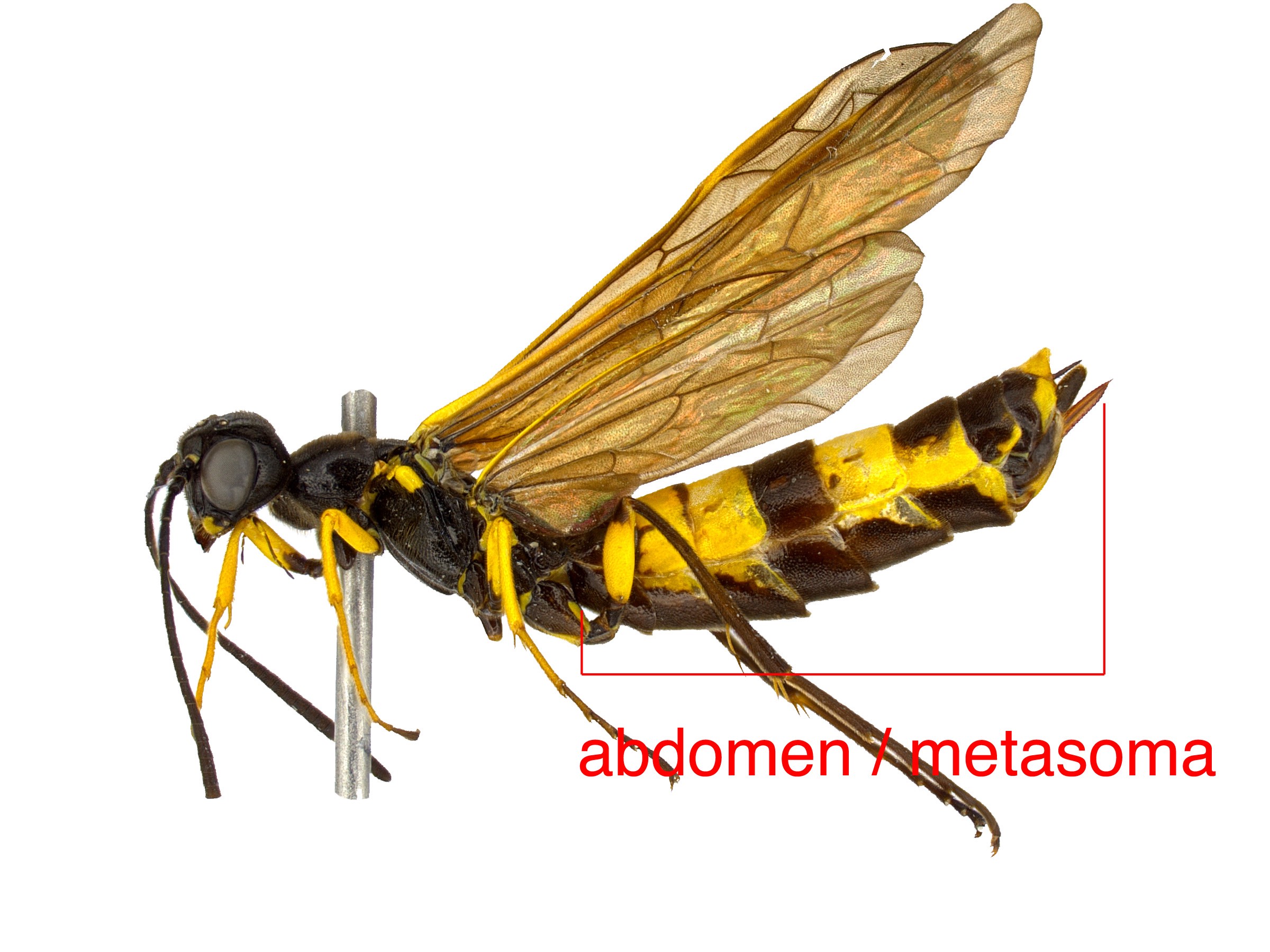 black with blue-purple metallic reflections (Matsumura 1912Matsumura 1912:
black with blue-purple metallic reflections (Matsumura 1912Matsumura 1912: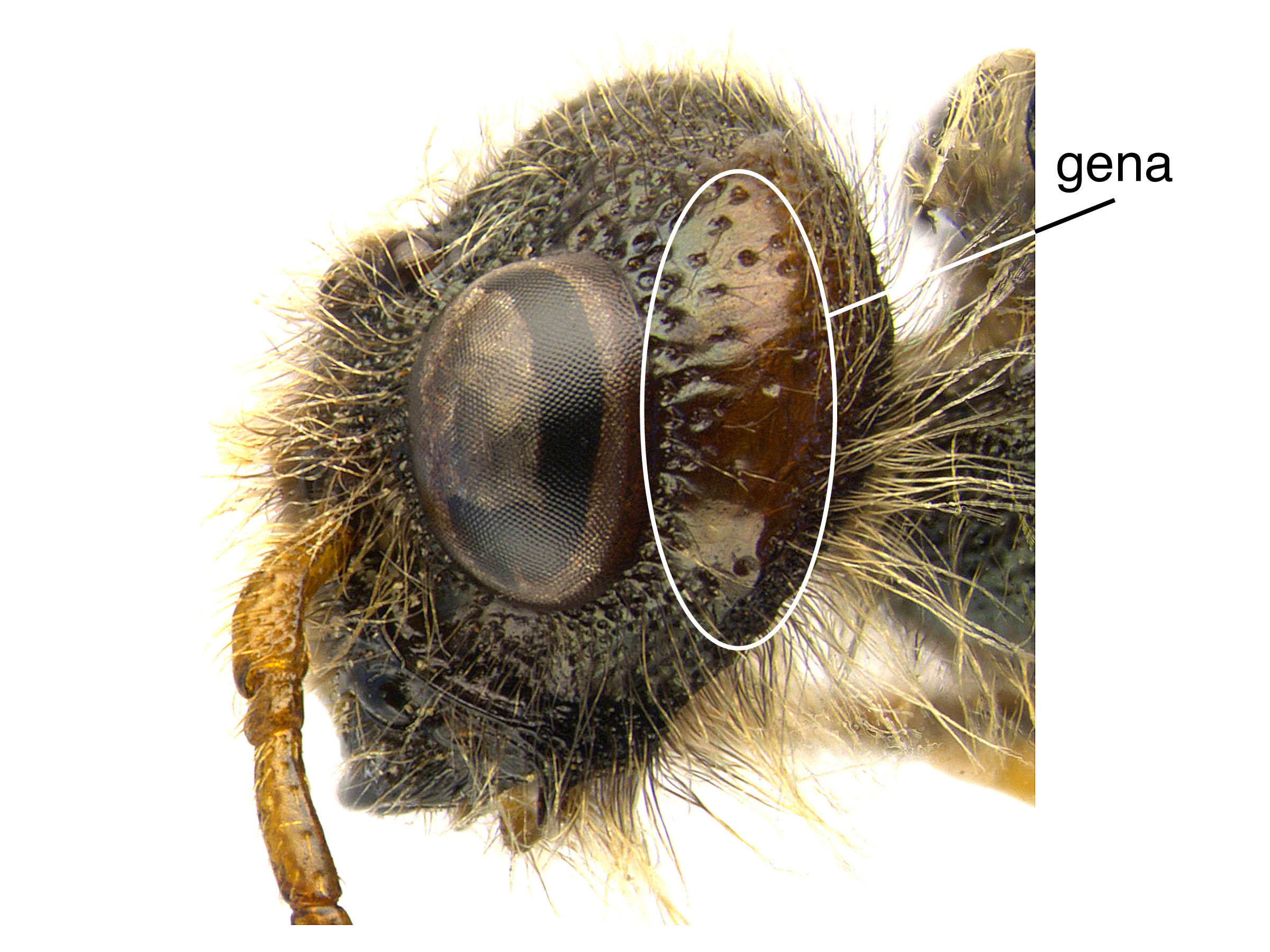 and vertexvertex:
and vertexvertex: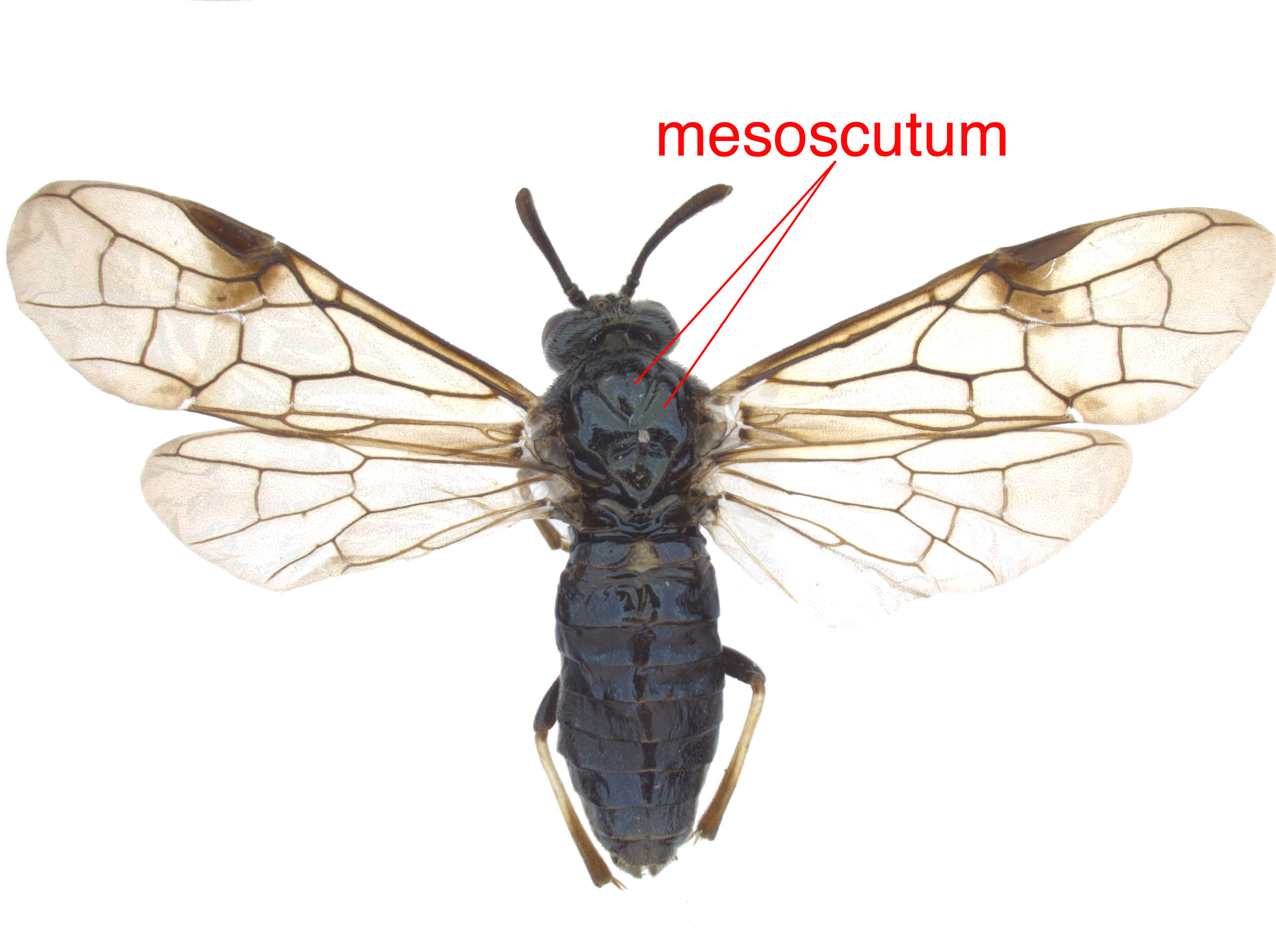 with small round pits (Matsumura 1912Matsumura 1912:
with small round pits (Matsumura 1912Matsumura 1912: mostly hyalinehyaline:
mostly hyalinehyaline: , but darkened at the apexapex:
, but darkened at the apexapex: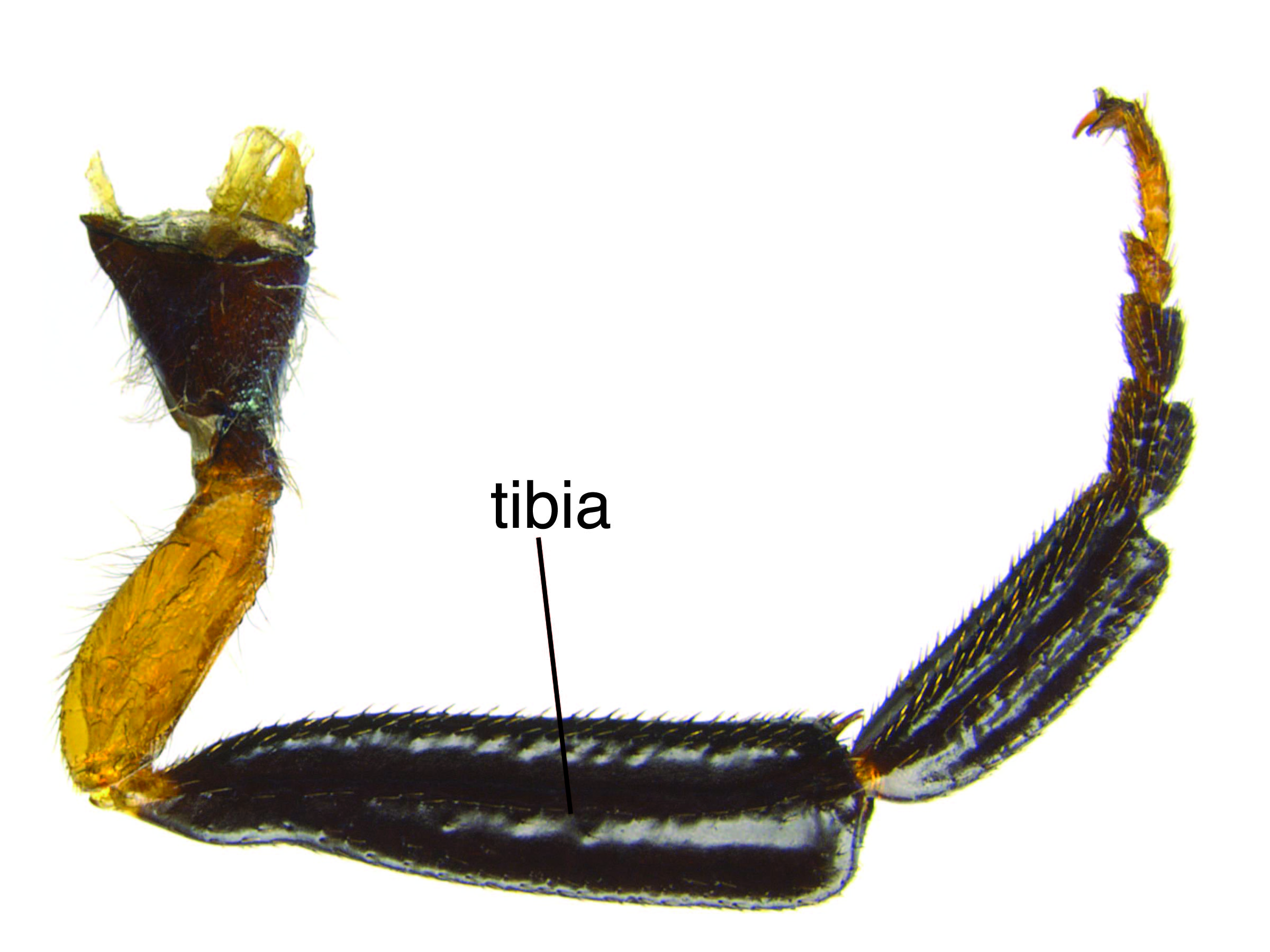 dark blue with yellow-brown bands at the basebase:
dark blue with yellow-brown bands at the basebase: (Matsumura 1912Matsumura 1912:
(Matsumura 1912Matsumura 1912: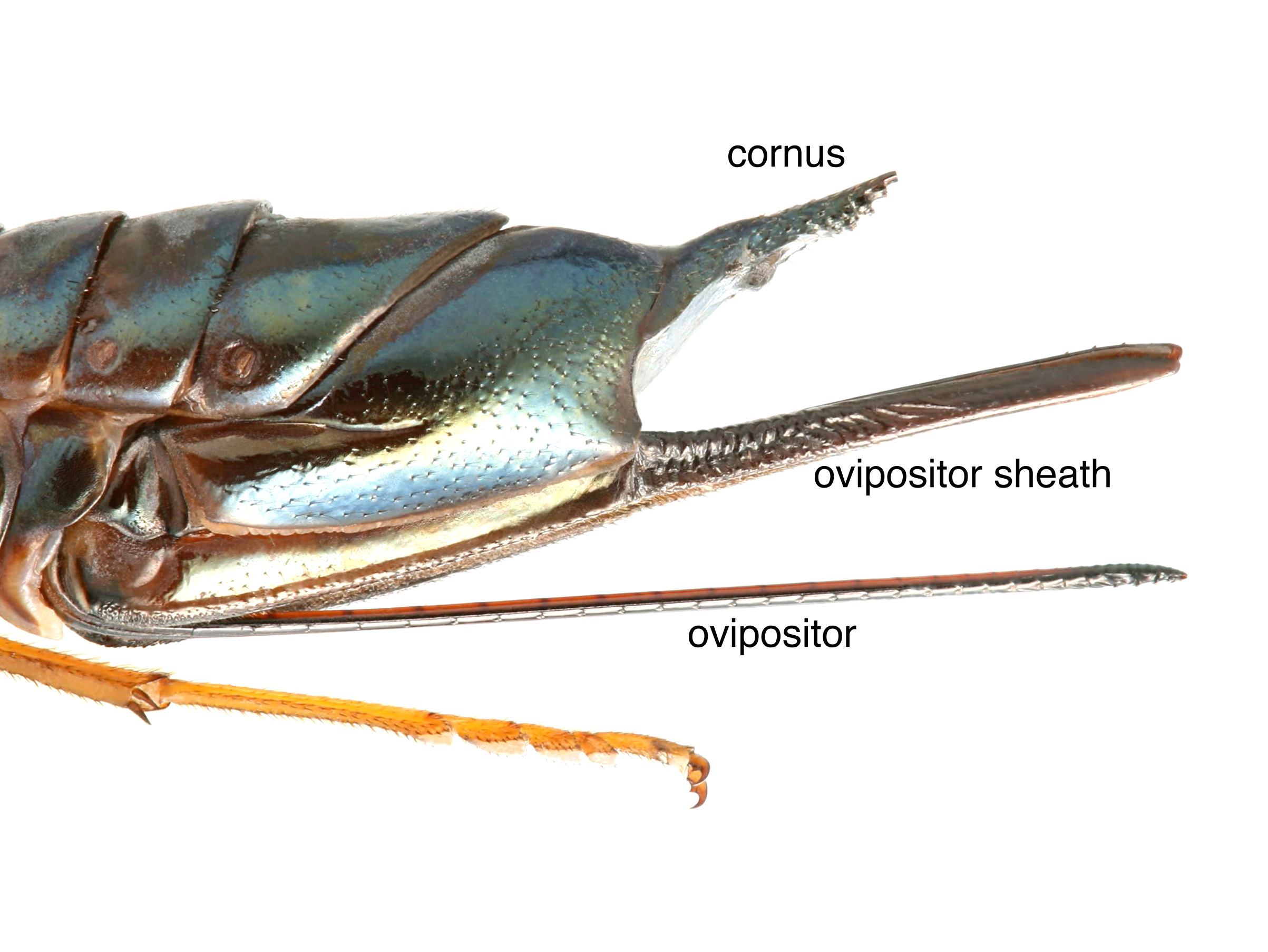 yellowish-brown at the basebase:
yellowish-brown at the basebase: about equal to half the length of the body (Matsumura 1912Matsumura 1912:
about equal to half the length of the body (Matsumura 1912Matsumura 1912:Males:
 and tarsustarsus:
and tarsustarsus: black; remaining legs yellowish-brown (Matsumura 1912Matsumura 1912:
black; remaining legs yellowish-brown (Matsumura 1912Matsumura 1912: metallic blue (Matsumura 1912Matsumura 1912:
metallic blue (Matsumura 1912Matsumura 1912: yellow at the basebase:
yellow at the basebase: dark blue (Matsumura 1912Matsumura 1912:
dark blue (Matsumura 1912Matsumura 1912:The female Sirex nitobei can be distinguished from S. imperialis by the mostly light-colored legs (Benson 1943Benson 1943:
Benson RB. 1943. Studies in Siricidae, especially of Europe and southern Asia (Hymenoptera, Smphyta). Bulletin of Entomological Research 34 (1): 27-51. https://doi.org/10.1017/S0007485300023464). Males can be distinguished from S. rufiabdominis by the median and laterallateral:
of or towards the side of the body
post ocellarocellar:
of or pertaining to the ocellus or ocelli
furrows (Xiao and Wu 1983Xiao and Wu 1983:
Xiao G and Jian W. 1983. The siricid wood wasps of China (Hymenoptera, Symphyta). Scientia Silvae Sinicae Memoirs of Forest Entomology 8: 1-29.).
none recorded
Sirex species feed on trees of Pinaceae and Cupressaceae. Sirex nitobei is recorded feeding on Larix kaempferi (Japanese larch), Pinus thunbergii (Japanese black pine), Pinus densiflora (Japanese red pine), Pinus armandii (Chinese white pine), other Pinus sp., and Abies firma (momi fir) (Okutani 1963Okutani 1963:
Okutani T. 1963. Descriptions of the larvae of horntails. Science Reports of the Hyogo University of Agriculture 6 (1): 23-27., Smith 1978Smith 1978:
Smith DR. 1978. Suborder Symphyta (Xyelidae, Parachexyelidae, Parapamphiliidae, Xyelydidae, Karatavitidae, Gigasiricidae, Sepulcidae, Pseudosiricidae, Anaxyelidae, Siricidae, Xiphydriidae, Paroryssidae, Xyelotomidae, Blasticotomidae, Pergidae). Hymenopterorum Catalogus 14: 1-193., Xiao and Wu 1983Xiao and Wu 1983:
Xiao G and Jian W. 1983. The siricid wood wasps of China (Hymenoptera, Symphyta). Scientia Silvae Sinicae Memoirs of Forest Entomology 8: 1-29., Tabata et al. 2012Tabata et al. 2012:
Tabata M, Miyata H, and Maeto K. 2012. Chapter 7 - Siricid woodwasps and their fungal symbionts in Asia, specifically those occurring in Japan. In: Slippers B, de Groot P, and Wingfield MJ, eds. The Sirex woodwasp and its fungal symbiont: research and management of a worldwide invasive pest. Springer. https://doi.org/10.1007/978-94-007-1960-6_7).
Female Sirex harbor symbiotic basidiomycete fungus in abdominal glands called mycangia. During oviposition, the site is inoculated with the fungus (Amylostereum spp.), which begins to decompose the surrounding wood. LarvaeLarva:
the immature stage of holometabolous insects
 feed on the fungus, and in the process bore galleries through the wood (Schiff et al. 2012Schiff et al. 2012:
feed on the fungus, and in the process bore galleries through the wood (Schiff et al. 2012Schiff et al. 2012:
Schiff NM, Goulet H, Smith DR, Boudreault C, Wilson AD, and Scheffler BE. 2012. Siricidae (Hymenoptera: Symphyta: Siricoidea) of the Western Hemisphere. Canadian Journal of Arthropod Identification 21: 1-305.). The mycangia of S. nitobei harbors Amylostereum areolatum fungus (Tabata et al. 2012Tabata et al. 2012:
Tabata M, Miyata H, and Maeto K. 2012. Chapter 7 - Siricid woodwasps and their fungal symbionts in Asia, specifically those occurring in Japan. In: Slippers B, de Groot P, and Wingfield MJ, eds. The Sirex woodwasp and its fungal symbiont: research and management of a worldwide invasive pest. Springer. https://doi.org/10.1007/978-94-007-1960-6_7).
Larvae are creamy white and grub-like in appearance with a dark head capsule. As with adults, larvaelarva:
the immature stage of holometabolous insects
 possess a short dorsaldorsal:
possess a short dorsaldorsal:
of or on the top surface of the body or structure
horn on the posterior end of the body. The larvaelarva:
the immature stage of holometabolous insects
 bore galleries into wood, feeding until pupation and subsequent emergence. Throughout this process, the larvaelarva:
bore galleries into wood, feeding until pupation and subsequent emergence. Throughout this process, the larvaelarva:
the immature stage of holometabolous insects
 use their horn to pack the tunnel behind them with sawdust. Emergence holes are perfectly circular. The fungal symbiont is carried in specialized organs in female larvaelarva:
use their horn to pack the tunnel behind them with sawdust. Emergence holes are perfectly circular. The fungal symbiont is carried in specialized organs in female larvaelarva:
the immature stage of holometabolous insects
 that develop into the mycangia after metamorphosis (Schiff et al. 2012Schiff et al. 2012:
that develop into the mycangia after metamorphosis (Schiff et al. 2012Schiff et al. 2012:
Schiff NM, Goulet H, Smith DR, Boudreault C, Wilson AD, and Scheffler BE. 2012. Siricidae (Hymenoptera: Symphyta: Siricoidea) of the Western Hemisphere. Canadian Journal of Arthropod Identification 21: 1-305.).
The documented flight period of S. nitobei is August to mid-October (Tabata et al. 2012Tabata et al. 2012:
Tabata M, Miyata H, and Maeto K. 2012. Chapter 7 - Siricid woodwasps and their fungal symbionts in Asia, specifically those occurring in Japan. In: Slippers B, de Groot P, and Wingfield MJ, eds. The Sirex woodwasp and its fungal symbiont: research and management of a worldwide invasive pest. Springer. https://doi.org/10.1007/978-94-007-1960-6_7). Adults live for only four days. There is evidence that this species has a preference for damaged or dying trees. However, the damage caused by the insect and the discoloration of the wood due to the fungus growth reduces the value of the lumber (Tabata et al. 2012Tabata et al. 2012:
Tabata M, Miyata H, and Maeto K. 2012. Chapter 7 - Siricid woodwasps and their fungal symbionts in Asia, specifically those occurring in Japan. In: Slippers B, de Groot P, and Wingfield MJ, eds. The Sirex woodwasp and its fungal symbiont: research and management of a worldwide invasive pest. Springer. https://doi.org/10.1007/978-94-007-1960-6_7).
World: Sirex nitobei is found Japan, Korea, and the Shaanxi and Yunnan provinces of China (Smith 1978Smith 1978:
Smith DR. 1978. Suborder Symphyta (Xyelidae, Parachexyelidae, Parapamphiliidae, Xyelydidae, Karatavitidae, Gigasiricidae, Sepulcidae, Pseudosiricidae, Anaxyelidae, Siricidae, Xiphydriidae, Paroryssidae, Xyelotomidae, Blasticotomidae, Pergidae). Hymenopterorum Catalogus 14: 1-193., Xiao and Wu 1983Xiao and Wu 1983:
Xiao G and Jian W. 1983. The siricid wood wasps of China (Hymenoptera, Symphyta). Scientia Silvae Sinicae Memoirs of Forest Entomology 8: 1-29.).
North America: not recorded
Map data from: GBIF.org (26 June 2019) GBIF Occurrence Download Sirex nitobei
Details about data used for maps can be found here.